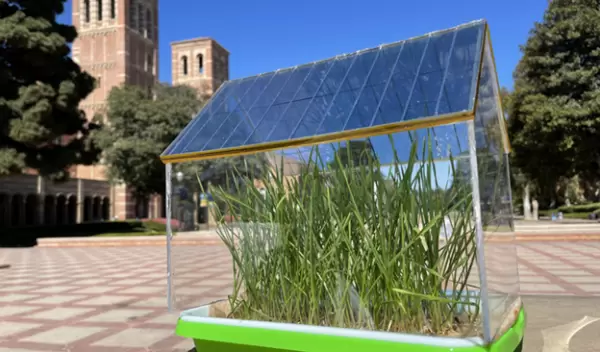
Scientists design solar roofs to harvest energy for greenhouses
As countries around the globe seek new energy sources, renewable energy options such as solar panels are in high demand.
However, solar panels can take up significant space and are often difficult to scale. Enter the new field of agrivoltaics, which focuses on the simultaneous use of land for both solar power generation and agriculture. For example, replacing the glass in greenhouses with solar panels could power the lamps and water controls in the greenhouse, or even the whole farm. But how does one build solar panels that can absorb energy from sunlight without blocking the light that plants need?
UCLA materials scientist Yang Yang and his team have designed just such a device. In a study published in Nature Sustainability, they explore a new, viable application of solar cells that does not require large plots of land.
The researchers, supported in part by the U.S. National Science Foundation, have developed a strategy for augmenting semi-transparent organic solar cells. These cells rely upon carbon-based materials, as opposed to the inorganic substances in conventional devices. The investigators incorporated a layer of a naturally occurring chemical called L-glutathione, which is sold as an antioxidant dietary supplement over the counter, and found that the addition extended the solar cells' lifetime, improved their efficiency, and still allowed adequate sunlight to reach plants in a greenhouse prototype about the size of a small dollhouse.
"Organic materials are uniquely suitable for agrivoltaics because of their light-absorption selectivity," said Yang. "The main drawback that has prevented their widespread use up to now is their lack of stability."
Organic solar cells tend to degrade more quickly than their inorganic counterparts because sunlight can cause organic materials to oxidize and thus lose electrons. The researchers found that the additional layer of the L-glutathione prevented the other materials in the solar cell from oxidizing, which resulted in the organic cells maintaining more than 80% efficiency after 1,000 hours of continuous use — as opposed to less than 20% without the added layer.
